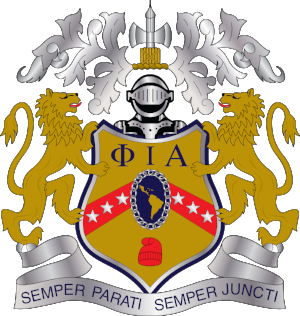About Us
Origins

The roots of Phi Iota Alpha Latino Fraternity were implanted at the Rensselaer Polytechnic Institute (RPI), Troy, NY in 1898. A group of Latin American students organized the Union Hispano Americana as a cultural and intellectual secret society based on the ideology of Pan-Americanism. The immediate goals of the UHA were to provide a cultural environment for students of Latin America and Spain. The UHA was the first association of Latin American students ever founded in the United States. The ideals and operations of the UHA expanded to several colleges and universities in the United States. However, due to the secrecy imposed upon its members, not many records were kept. The expansion and growth of the UHA was based on compromise and the ultimate need of similar organizations to unify and become more powerful.
In the northeastern part of the United States, a group of Latin American students decided to organize a cultural and intellectual fraternity, as a result Pi Delta Phi Latino Fraternity was founded at Massachusetts Institute of Technology in 1916. Shortly after its foundation, Pi Delta Phi initiated a search to expand to other colleges and universities where they became aware of the existence of other similar organizations.
Consolidation

Pi Delta Phi then established communications with Phi Lambda Alpha Latino Fraternity, which had been recently founded in 1919 at the University of California, at Berkeley. After some communication, these two organizations realized the existence of the strong non-Greek letter secret society of la Union Hispano Americana. As a result of intensive correspondence and various interviews, the three organizations merged. In their merger agreement, the three organizations adopted the name of Phi Lambda Alpha Latino Fraternity, with the distinctive emblem & constitution of Pi Delta Phi, and the goals & motto of the UHA. This new union was formalized in June 1921, in the city of New York.
In the northeastern part of the United States, a group of Latin American students decided to organize a cultural and intellectual fraternity, as a result Pi Delta Phi Latino Fraternity was founded at Massachusetts Institute of Technology in 1916. Shortly after its foundation, Pi Delta Phi initiated a search to expand to other colleges and universities where they became aware of the existence of other similar organizations.
Establishment

In December of 1931, the most profound historical event in the history of Latino Fraternities took place in Troy, NY. Delegates from Phi Lambda Alpha Latino Fraternity and Sigma Iota Latino Fraternity assembled with the objective of forming a strong and extensive Fraternity to address the needs of Latin Americans in universities in the U.S.
On December 26, 1931, the first day of a three-day convention, Phi Iota Alpha Latino Fraternity was born as both groups agreed on the merger contract to unify under one name, one banner, one organization and one ideal. The next day of business was dedicated to preparing the details of revising the constitution, working on the creation of a shield to represent the newly formed national Latino brotherhood, and internal rules and regulations documents. On December 28th, by the end of the three-day convention, most of the merger was completed. Now the last step in the merger was the ratification of some of the chapters of Sigma Iota that were not represented at the convention.
Expansion
Since that historical unification, Phi Iota Alpha expanded nationally as well as internationally. At the international level, the Fraternity sponsored the 1932 convention in the city of New York with the purpose of forming the Union Latino Americana (ULA). The ULA was a fundamental pact that organized Latin America into 22 zones; each of the 21 countries constituted a zone and Phi Iota Alpha represented the 22nd zone in the United States. Under the ULA, a framework for the implementation of Pan-American ideology, all the zones were bonded by the same constitution and internal rules and regulations. This union proved efficient in setting forth the ideology of Pan-Americanism since most of the zones actively and diligently participated in the name of the ideals. By 1937, the ULA had several well-established and functional zones including:
- Phi Kappa Alpha in Cuba
- Phi Sigma Alpha in Puerto Rico
- Phi Tau Alpha in Mexico
In September of 1939, the Phi Sigma Alpha zone decided to separate from the ULA and eventually, merged with Sigma Delta Alpha to form Phi Sigma Alpha Fraternity of Puerto Rico.
1931-1983
With the outbreak of World War II, the expansion rate was significantly reduced for Phi Iota Alpha in the U.S. By 1951, the Fraternity, drafted and implemented a new expansion strategy, hence the decade of the 1950's was a period of positive internal growth for the Fraternity. In the early 1950's, Phi Iota Alpha eradicated any residue of its political agenda. With only a few chapters, the Fraternity continued to pursue its vivid mission by implementing the "Universidad Ideologica."
The 1960's proved to be very challenging years for Phi Iota Alpha and all Latinos in general. The effects of a World War II, the Vietnam War, and the 60’s counter-culture created an anti-institutional atmosphere amongst many college students. In addition, this drastically reduced the influx of Latin American students enrolled into American universities, which hindered potential members. As a result, by 1968, after many years of struggling to adapt to its time, the only active undergraduate chapter at RPI closed the doors of their chapter house. By 1976, the last active President graduated from RPI, taking with him the Fraternity's official documents and archives. From 1977 to 1983, the Fraternity witnessed a period of inactivity at the undergraduate level. Some efforts were made to re-emerge Phi Iota Alpha but these efforts did not bear any fruit. Throughout this period, brothers continued to maintain communication, and continued to accomplish the mission of the organization. The history, ideals and goals of the Fraternity never diminished; it simply did not have active undergraduate members to cultivate them. Phi Iota Alpha continued to exist within the hearts of many graduate members as they continued to develop their professional lives mostly in Latin American countries and in the United States.
1983-Present
In 1984, a group of determined young men at RPI, upon learning about the Latino empowerment and culture that once existed on their campus, took the challenge of reviving the spirit of Phi Iota Alpha. In doing so, these courageous young men became the new generation of Phi Iota Alpha Latino Fraternity, Inc. Briefly after the re-emergence of the Fraternity, in an extraordinary session, the last Secretary General instituted the members of the RPI chapter as the Alpha Chapter. In the 1980's the Fraternity dedicated its efforts to rebuilding the organizational infrastructure and to expand to several universities in New York State. By 2000, Phi Iota Alpha had chartered chapters across the United States.
